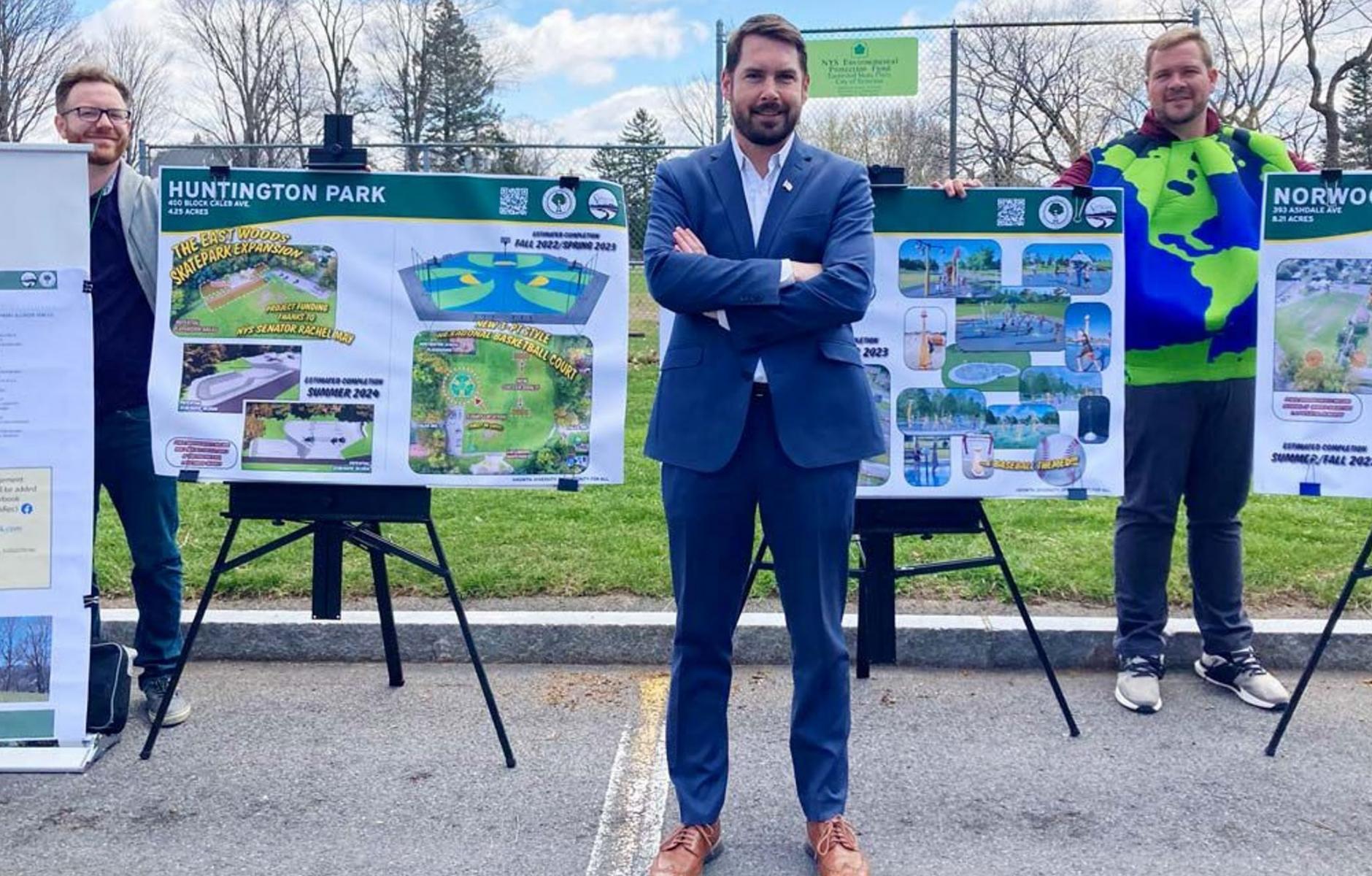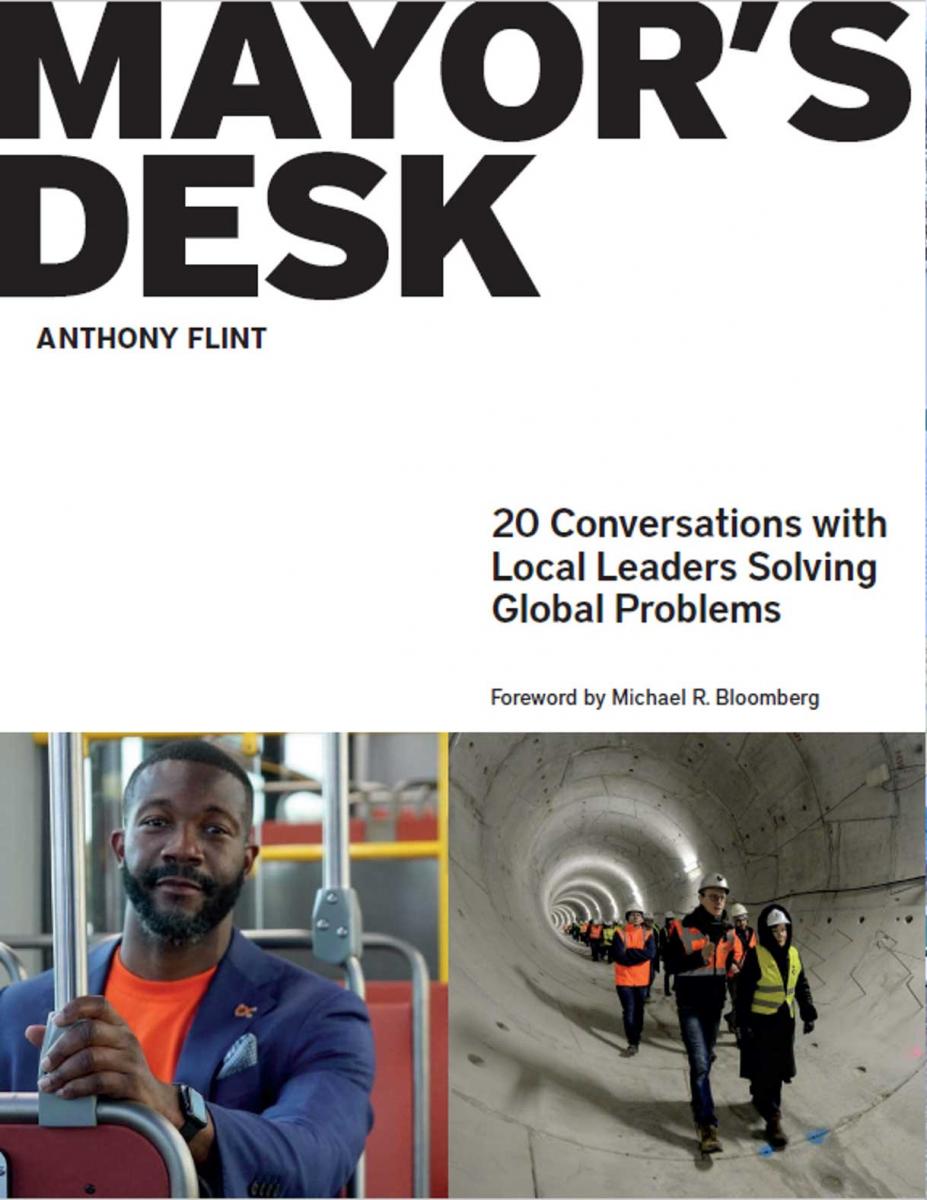
The next generation of urban mechanics
Over the past five years, I’ve had the privilege of interviewing 20 mayors from all around the world, as part of an open-ended inquiry into how municipal leaders have managed the concurrent crises of an all-consuming pandemic, the accelerating impacts of climate change, and an agonizing lack of affordable housing.
The conversations—compiled in a recently published book, Mayor’s Desk: 20 Conversations with Local Leaders Solving Global Problems—surface some common traits, including pragmatism, clear-eyed and earnest problem-solving, and a flair for the creative. On further reflection, however, there may be one key secret to the success of these innovative mayors: they’re kind of acting like city planners.
Understanding public works, infrastructure, land use, zoning, and real estate development has been prerequisite for leading cities for quite some time, to be sure. Appreciation for architecture and urban design, parks, and public space has increasingly been valued as well. There’s something about these times, though, that seems to reward—and indeed require—being conversant in blueprints and building codes.
Climate change is a force unto itself, thrusting municipal leaders into a world of technical specifications and engineering derring-do. In the past, local politicians may have patiently endured debriefings by experts. The urgency of the climate emergency requires them to really get details and nuances.
Marty Walsh, mayor of Boston when I interviewed him in 2020, tapped his knowledge of logistics from years in the building trades when he launched Climate Ready Boston, a resilience plan for the city’s staggering 47 miles of coastline. Where’s that anticipated 40 inches of sea level rise going to go? What are the hydrological dynamics if a berm is built in East Boston, and a floodable park in Southie? And what about the next jurisdiction over, since storm surge and king tides don’t care about city limits? Recurring flooding along Boston’s harborfront is a constant reminder of the high stakes of these calibrations.
The pandemic lockdowns prompted another kind of exploratory exercise in planning and urban design, as mayors found themselves reconceptualizing conventional understanding of the public realm. The new spaces created by cafes and restaurants pushed out to the sidewalk, the bike lanes, the pop-up open-air markets—it was all the stuff of an architecture school studio, but rolled out in real time. When mayors talked about the “slow streets” transformation, they put it in the context of making neighborhoods more walkable and bike-friendly, a common goal of virtually all the municipal leaders in the book. The swift flow of traffic and on-street parking were no longer sacrosanct.
Still, an attitude of experimentation prevailed; pilots could be retracted. And that, too, reflects the modern planner’s posture. I caught up with Libby Schaaf, then the mayor of Oakland, in 2020, just after she had to deal with the Grand Princess cruise ship disgorging Covid-infected passengers at the city’s port. She was one of the first to close selected streets to drivers, but when there was pushback related to safety, convenience, and equity concerns, she ramped up community listening sessions and made adjustments.
“We’re not afraid to try new things and learn from both the positive feedback and the critiques,” Schaaf said at the time. That kind of humility is reflected in the practice of exploratory scenario planning, which guides communities to consider multiple possibilities for an uncertain future.
These mayors have an impressive command of the language of planning and zoning. In a recognition of how the rules of the development game so profoundly impact affordability and racial equity, they are eager to use the playbook of reforms to increase the supply and diversity of housing: banning single-family-only zoning and reducing minimum lot size, allowing “missing middle” three- and four-plexes and accessory dwelling units, and reducing or eliminating costly parking minimums.
“If we’re going to get this right, then we have to have a comprehensive review and reform of our land use policies,” Cincinnati Mayor Aftab Pureval said in our interview. “If we’re serious about deconcentrating poverty and desegregating our city, then we’ve got to take a look at multifamily unit prohibitions.”
Pureval, on guard against displacement as Cincinnati gains appeal as a climate haven, has a zoning reform package before the city council now, as he tries to recapture the city’s glory days before urban renewal. “It’s a little bit undoing the past while also focusing on what used to exist,” he said.
From human-scaled streetscapes to the 15-minute city, there is much in the agendas of these mayors for neotraditional urbanists to love. Syracuse Mayor Ben Walsh was an early backer of that most urban-renewal-reversing exercise—dismantling an urban freeway (I-81) and replacing it with a surface-level multimodal boulevard—and after many years of stops and starts, it’s actually happening. Birmingham Mayor Randall Woodfin reflected on how the appearance of neighborhood blocks can create a sense of security and belonging. It will require investment and attention to detail to correct, parcel by parcel, the “‘snaggletooth’” neighborhoods where you remove blight, but now you have a house, empty lot, house, empty lot, empty lot,” he said.
Kostas Bakoyannis, the mayor of Athens, even as he juggled the challenges of migrants, homelessness, and pollution, also made it a priority to power-wash graffiti and help encourage private residents and shopkeepers to be better stewards of blocks, squares, and parks.
Support of public transportation was another constant theme among these mayors, vital as it is for an efficient and equitable city, whether Lima’s expanding metro or Santa Monica’s Big Blue Bus “any line, anytime” and mobility-on-demand programs. Mobility, neighborhood revitalization, housing affordability, and climate action are all intertwined and interconnected, as far as these municipal chief executives are concerned.
The urbanist Jane Jacobs advocated for thinking about cities from the ground up, not the top down, with special attention to function and form at the level of the street. She predicted that such ferment would become contagious. “Lively, diverse, intense cities contain the seeds of their own regeneration,” she wrote in The Death and Life of Great American Cities.
“Cities are incubators for innovation,” Washington DC Mayor Muriel Bowser said in her Mayor’s Desk interview. “We are constantly learning from each other.”
More than a half-century after Jane Jacobs issued that wisdom, this new generation of urban mechanics is speaking much the same language.





